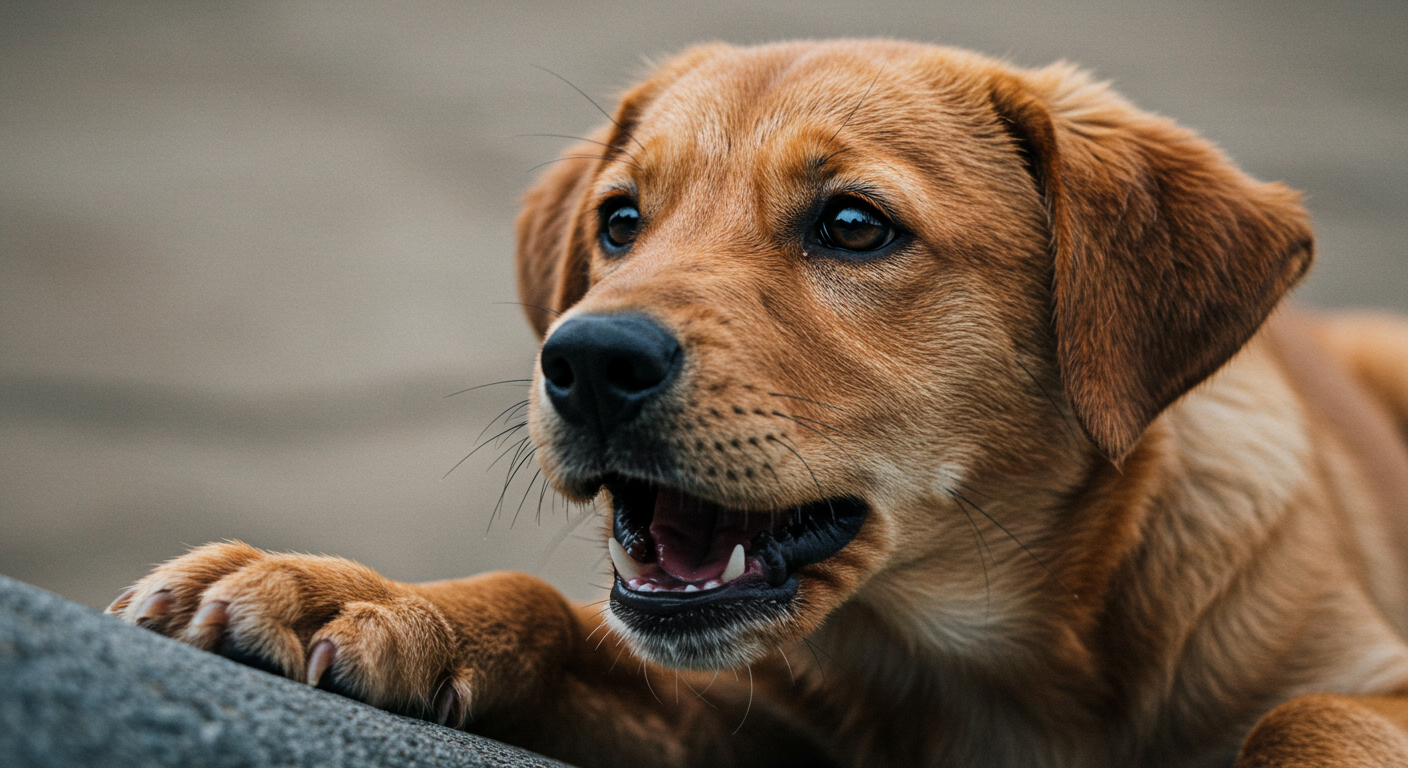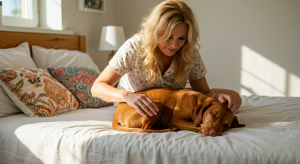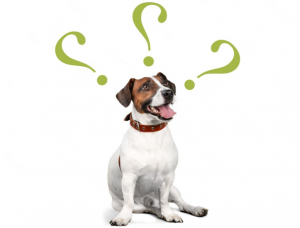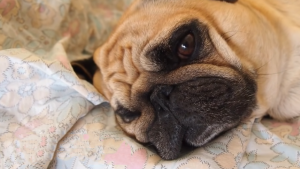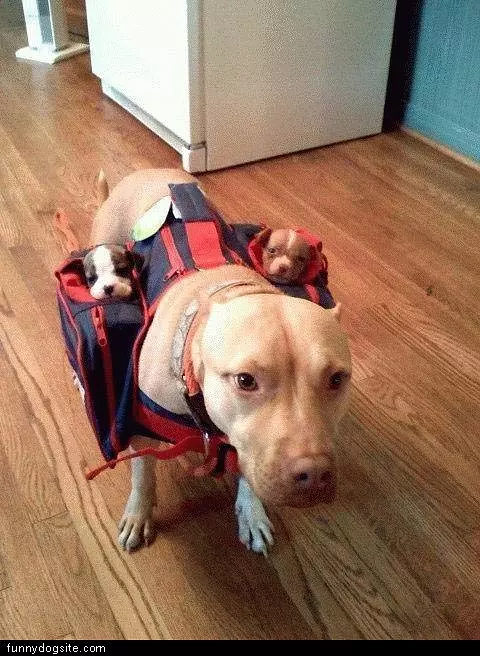Puppy biting can be adorable at first—until your fingers start to hurt, your favorite shoes are shredded, and your playful pup mistakes your ankles for chew toys. If you’re searching for a way to control this unwanted nipping, you’ve come to the right place. This guide will walk you through the reasons behind puppy biting, effective training strategies, and solutions recommended by reputable sources like the American Kennel Club. By the end, you’ll know exactly how to stop puppy biting and foster a safe environment for you and your furry companion.
What We'll Cover
- Normal Development and Teething
- Curiosity and Play
- Common Myths About Puppy Biting
- Step-by-Step Solutions to Stop Puppy Biting
- 1. Implement Positive Reinforcement
- 2. Redirect the Urge to Chew
- 3. Use a Gentle Yet Firm “Ouch” Command
- 4. Schedule Consistent Training Sessions
- 5. Provide Sufficient Exercise and Mental Stimulation
- Sample Puppy Teething Timeline
- FAQs
- Avoid Overstimulation to Reduce Biting
- Correcting Persistent Puppy Biting
- Additional Tips and Tricks
- Conclusion: A Peaceful Path Forward
Normal Development and Teething
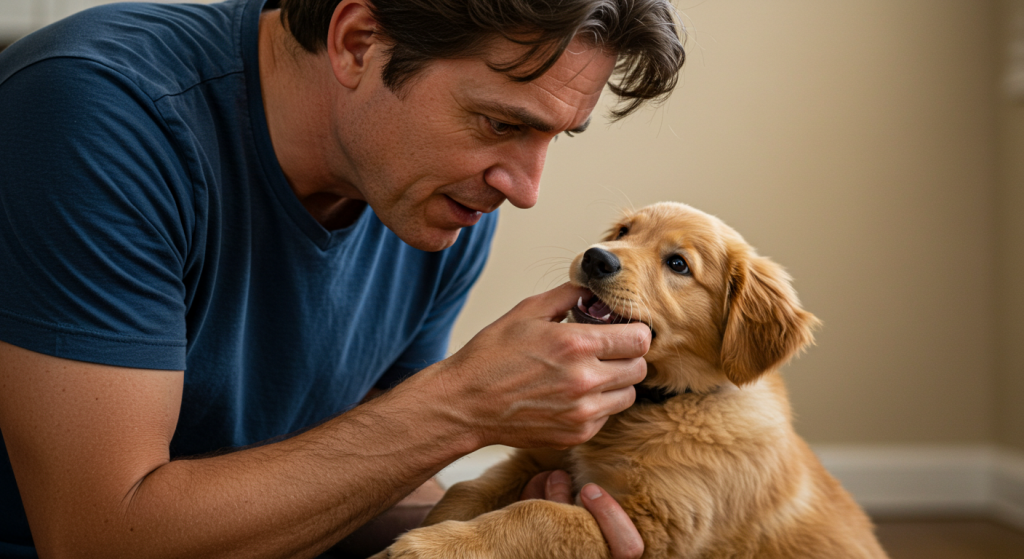
Puppies typically begin to bite or “mouth” objects as part of their natural development. According to Wikipedia, puppies enter the teething stage around three to four weeks old. During this time, they explore the world with their mouths. Between 3 and 6 months, puppies lose their baby teeth and grow adult teeth. This transition phase can be uncomfortable, making them chew and bite to soothe their gums.
Key Fact: Most puppies have all their adult teeth by 6-7 months of age. Biting often tapers off once teething discomfort subsides, but early training is crucial to prevent it from becoming a habit.
Curiosity and Play
Biting isn’t always about teething pain; sometimes it’s a way puppies discover new textures and objects. In a litter, puppies nip each other to play or establish boundaries. Once they join a human family, they may treat people the same way—biting or nipping during play sessions.
Common Myths About Puppy Biting
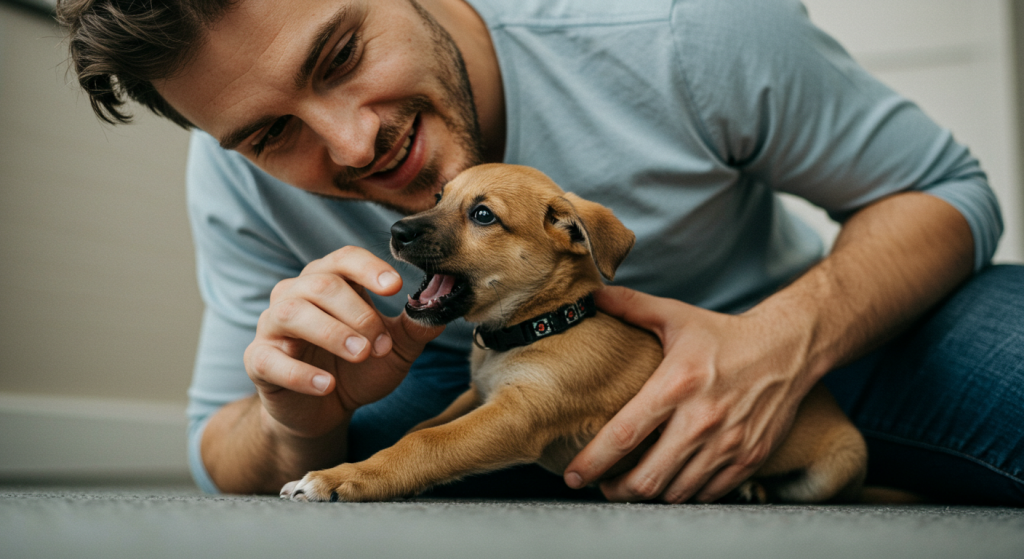
-
Myth: “It’s Aggression”
- Fact: Most puppy biting is normal play behavior. True aggression in very young dogs is rare and usually accompanied by other warning signs like snarling, deep growls, or fear-based reactions.
-
Myth: “You Must Punish Biting Harshly”
- Fact: Physical punishment or yelling can make puppies fearful or confused. Positive reinforcement and redirection are far more effective at stopping puppy biting in the long run.
-
Myth: “They’ll Outgrow It Without Training”
- Fact: Some puppies do reduce biting as they mature, but consistent training ensures they learn appropriate boundaries. Allowing biting behaviors to linger can lead to problems later on.
Step-by-Step Solutions to Stop Puppy Biting
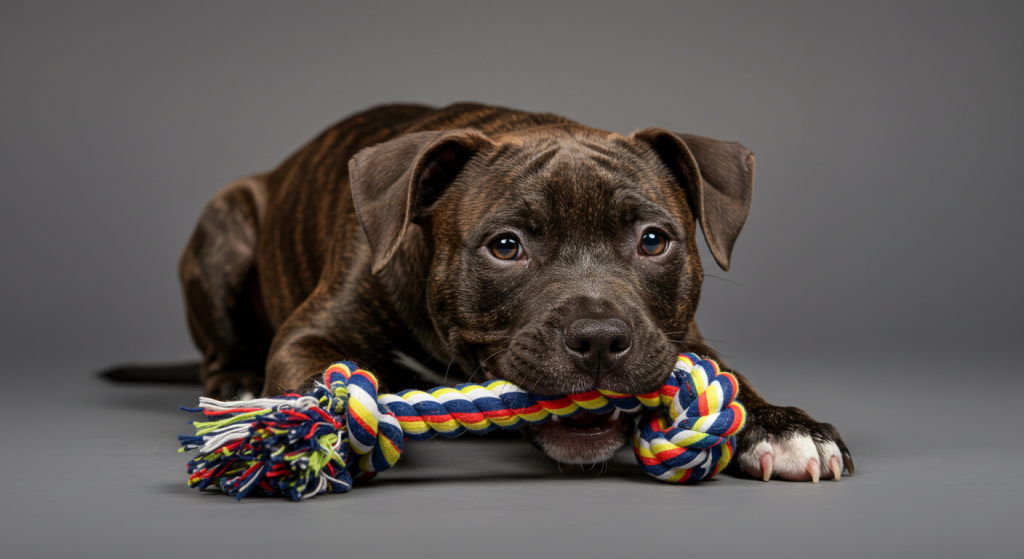
1. Implement Positive Reinforcement
-
Reward Good Behavior
Use treats, praise, or petting whenever your puppy interacts with you without biting. For instance, if they sit calmly instead of mouthing your hands, immediately offer a small treat and cheerful praise like “Good job!” This helps puppies associate gentle behavior with positive outcomes. -
Ignore Unwanted Biting
If your puppy starts to bite during playtime, calmly withdraw attention. Stand up or step away for about 30 seconds. This brief timeout teaches the puppy that biting halts fun and social interaction.
2. Redirect the Urge to Chew
-
Offer Chew Toys
Provide sturdy rubber toys or puppy-specific chew items. When you sense your pup wants to bite your hands or feet, gently substitute a toy. Consistently redirecting them to a safe chew toy teaches them what’s acceptable to bite. -
Rotate Toys
Keep a variety of textures available—plush toys, rope toys, and rubber toys—to pique your puppy’s interest. Over time, they’ll learn that these toys are their designated “biting zone,” and you’ll reduce the chance of them redirecting that energy onto you.
3. Use a Gentle Yet Firm “Ouch” Command
-
Mimic Littermate Feedback
When puppies play with their littermates, one loud yelp signals that a bite is too hard. Imitate this by saying “Ouch!” in a slightly elevated tone (but without yelling) to let your puppy know the bite was painful.- Immediately stop interacting for a few seconds.
- Resume gentle play only if the puppy calms down.
This teaches boundaries and encourages softer play.
4. Schedule Consistent Training Sessions
-
Short and Frequent Sessions
Puppies have short attention spans, so opt for 5- to 10-minute training intervals, 2–3 times a day. Focus on basic commands like “sit,” “stay,” and “leave it.” These commands indirectly help control biting by instilling discipline and respect. -
Clicker Training
Consider a clicker to mark desirable behaviors. When your puppy refrains from biting during a play session, click immediately and reward. The clicker sound becomes a clear signal they did something right.
5. Provide Sufficient Exercise and Mental Stimulation
-
Daily Walks and Play
A tired puppy is less likely to be destructive. Regular exercise—tailored to your puppy’s age and breed—helps burn excess energy, leaving less drive for biting. -
Interactive Puzzles and Games
Puzzle feeders or treat-dispensing toys engage a puppy’s mind. This mental stimulation can decrease nuisance behaviors like biting out of boredom.
Sample Puppy Teething Timeline
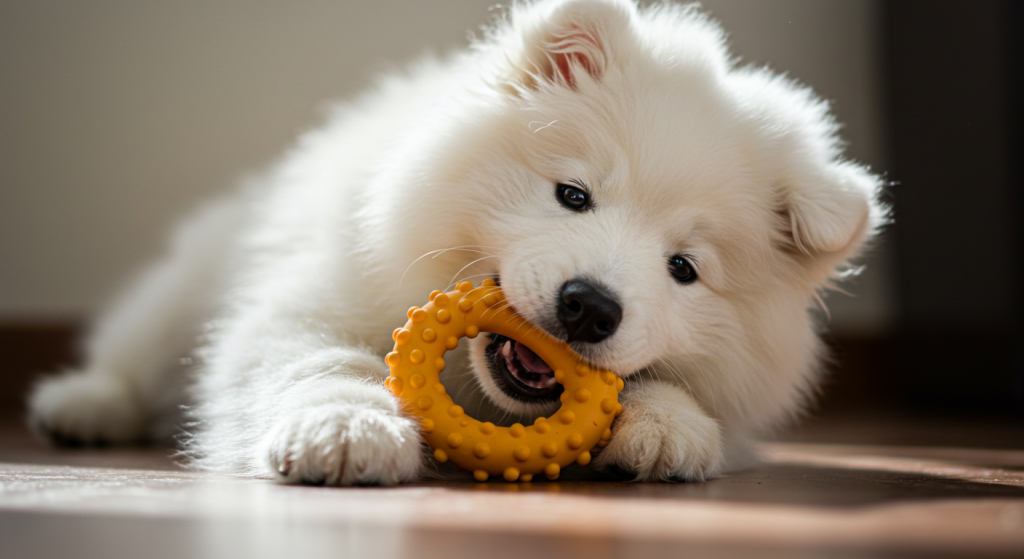
Below is a brief table illustrating approximate teething milestones:
| Age (Weeks) | Development Stage | Biting Behavior |
|---|---|---|
| 3–4 | Baby teeth emerging | Mild nipping, exploring environment |
| 6–8 | All baby teeth in place | Increasing biting during play |
| 12–16 | Transition to adult teeth starts | Heightened chewing to soothe gums |
| 20–24 | Most adult teeth in place | Biting may lessen with training |
| 24–28+ | Teething mostly complete | Biting typically reduces significantly |
Use this as a rough guide; each puppy develops at its own pace. For more detailed advice, refer to resources like the American Kennel Club’s puppy teething guides or official government websites on pet health.
FAQs
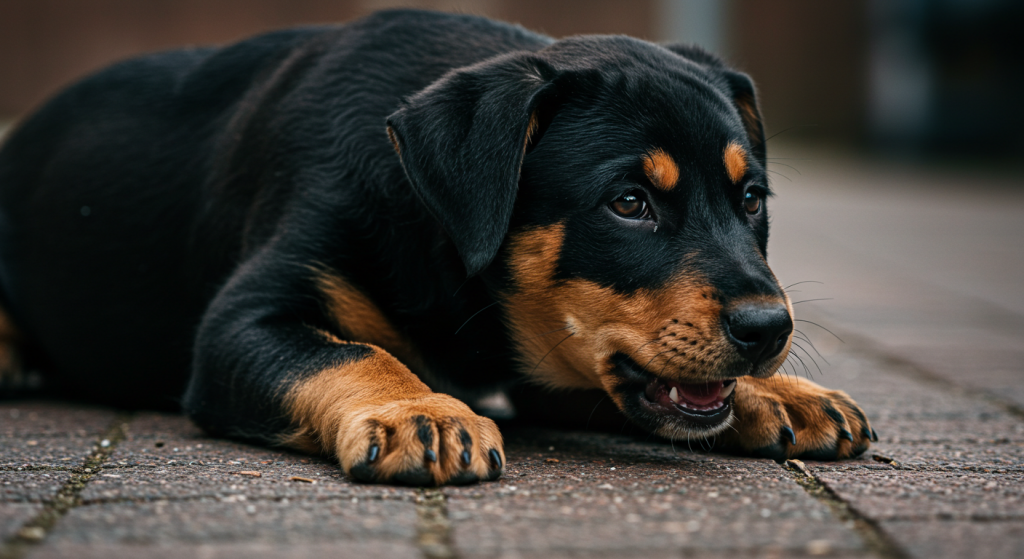
When Do Puppies Normally Stop Biting?
Most puppies significantly reduce their biting habits by about 5 to 7 months old. That’s when most of the adult teeth emerge, and they gradually lose the urge to mouth objects. However, consistent training is still essential to fully eliminate undesired biting.
Should I Use Anti-Chew Sprays?
Anti-chew sprays with bitter flavors can discourage a puppy from mouthing household items. They can be effective, but they’re not a substitute for proper training. Use them alongside consistent redirection and positive reinforcement. Always check labels and choose pet-safe products.
Does Punishment Help?
Harsh punishments, including hitting or yelling, often make biting worse. Your puppy could become fearful or anxious, leading to more behavioral issues. Instead, focus on firm commands, timeouts, and rewarding good behavior. If you need more specialized techniques, consult a certified dog trainer or behaviorist.
Avoid Overstimulation to Reduce Biting
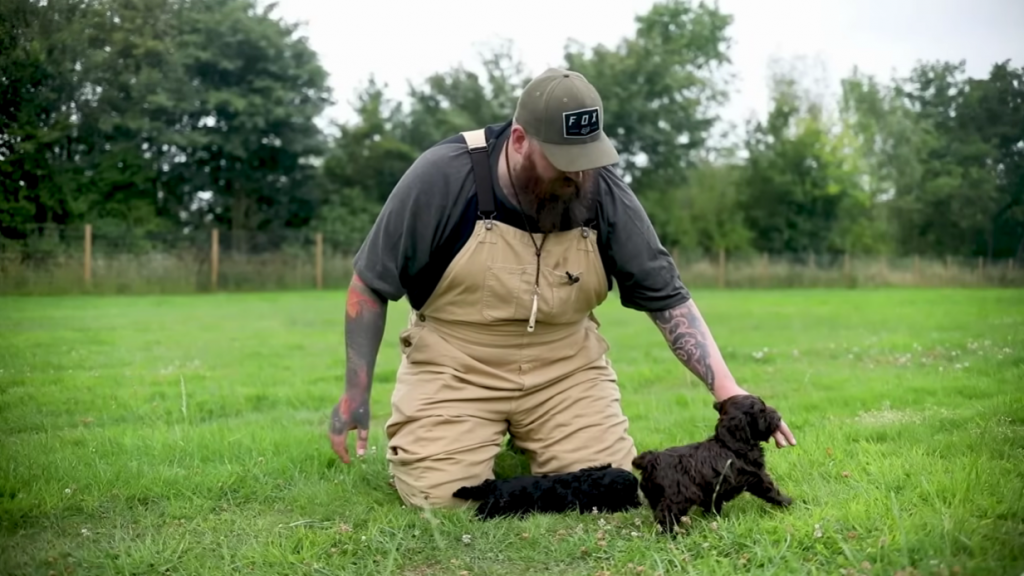
Be mindful of how and when you play with your puppy. Overly excited puppies tend to nip more. If you notice your pup getting hyper—zooming around, barking excessively, or repeatedly lunging at hands—pause the play session. A quick timeout can prevent an excited bite from escalating into a bad habit.
Calming Techniques
- Gentle Stroking: Slowly pet your puppy in smooth, soothing motions while speaking softly.
- Soothing Music: Some owners swear by calming music or white noise to help puppies relax.
- Crate Training: Proper crate training can give your puppy a safe, quiet space to calm down when they’re overly stimulated.
Correcting Persistent Puppy Biting
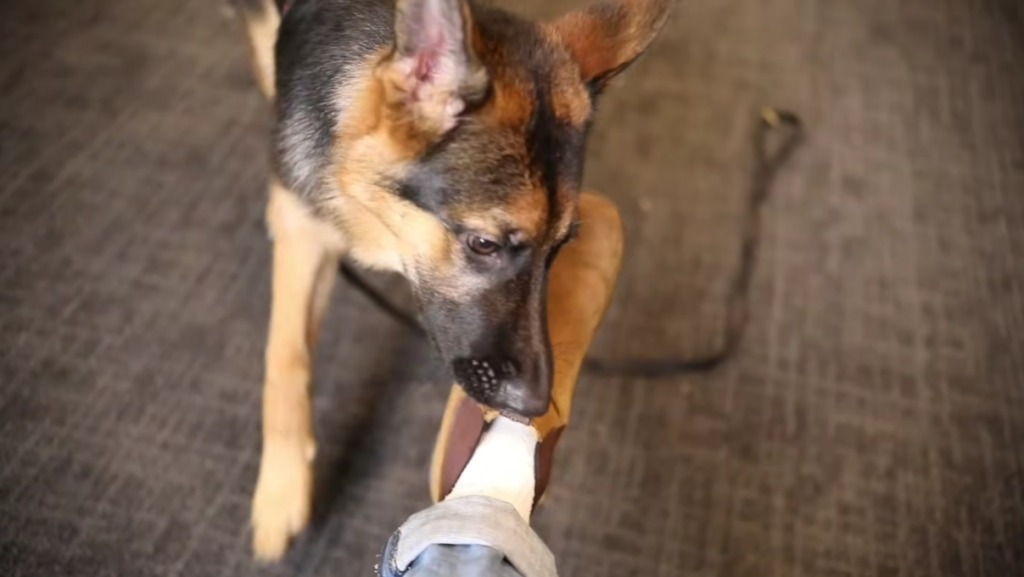
Seek Professional Guidance
If your puppy’s biting escalates or doesn’t improve, consult a professional trainer or veterinarian. They can identify if anxiety, fear, or other underlying issues contribute to excessive nipping.
Health Checkups
In rare cases, medical problems—such as gastrointestinal discomfort or dental issues—may lead to increased biting. Regular vet visits rule out any health concerns, ensuring your puppy’s biting is purely behavioral and not pain-related.
Additional Tips and Tricks
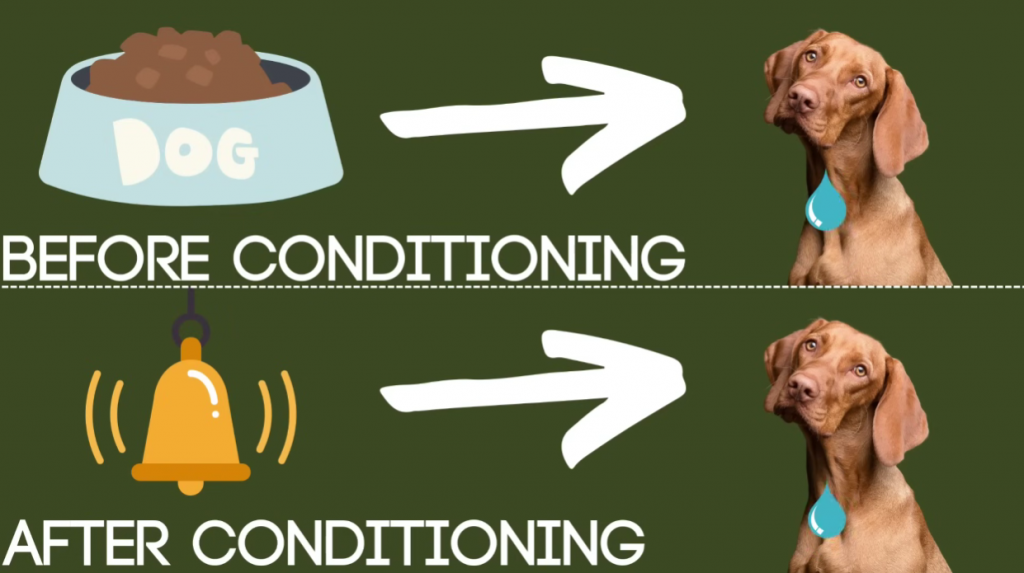
-
Consistency Is Key
Everyone in the family should follow the same training protocol. Mixed signals confuse the puppy and slow progress. -
Use Verbal Cues
Simple words like “No,” “Gentle,” or “Off” reinforce acceptable behavior. Combine these cues with consistent body language and tone for clarity. -
Set Realistic Expectations
Puppies aren’t born understanding house rules. Patience and practice are necessary. Celebrate small wins like softer bites and shorter biting sessions. -
Enrich Their Environment
Beyond toys, consider small agility obstacles or interactive games. A busy puppy has fewer reasons to nip at you for entertainment.
Conclusion: A Peaceful Path Forward
Learning how to stop puppy biting is about understanding your puppy’s needs, setting clear boundaries, and reinforcing good behavior. With consistent training sessions, positive reinforcement, and proper socialization, your puppy will soon learn that human skin isn’t a chew toy.
Remember that each puppy develops at its own pace. If you stay patient and consistent, you’ll prevent small nips from turning into bigger problems. By giving your puppy engaging toys, enough exercise, and mental challenges, you’ll create a healthy environment where biting isn’t necessary.
Now that you’re armed with these essential tips, you can shape your puppy into a polite and playful companion—and keep your hands and ankles safely out of reach.
The responses below are not provided, commissioned, reviewed, approved, or otherwise endorsed by any financial entity or advertiser. It is not the advertiser’s responsibility to ensure all posts and/or questions are answered.
